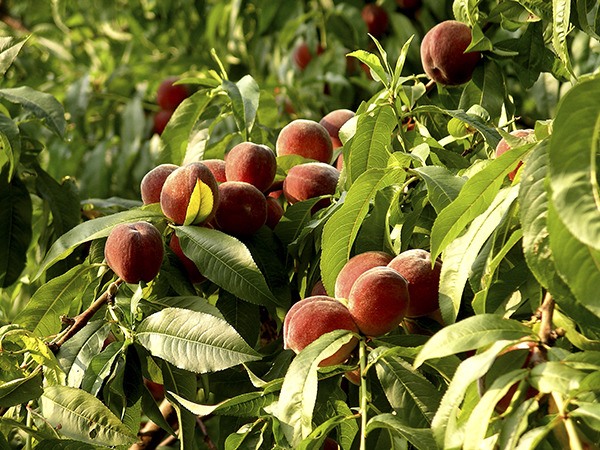By Jeanette Stehr-Green
Fruitless fruit trees are frustrating and result from a variety of causes. Clues as to why your tree did not bear fruit can be gleaned from observations of its flowering and fruiting.
Did your tree bloom? Did it bloom but not set fruit? Did it set fruit, but the fruit dropped prematurely?
Did your tree bloom at all?
If your fruit tree has never bloomed, it could be too young. Fruit trees produce only after sufficient root growth, leaf production and development of branches. Peach trees bear fruit within 2 to 4 years after planting. Apple, apricot and sour cherry trees usually bear within 3 to 5 years. Pear and plum trees bear within 4 to 6 years and sweet cherries within 5 to 7 years.
If your tree is old enough and still not blooming, you might not be pruning correctly. Peaches bear fruit on 1-year-old twigs or shoots. Most other fruit trees bear on 2-year old wood (or older). Be sure you know the pruning requirements of the particular tree.
An especially heavy fruit crop one year will inhibit flower initiation and development for the next year leading to a biennial harvest pattern. To prevent every-other-year fruit crops, thin your fruit trees (remove excess fruit) in early summer. (See sidebar.)
Extremely cold winter temperatures can kill dormant flower buds. Sweet cherry and peach trees are more susceptible to spring cold temperatures than apple, pear, plum or sour cherry trees. Since you cannot control the weather, plant fruit trees suited to your climate.
Did your tree bloom but not set fruit?
If your tree was covered with blossoms in the spring but did not set fruit, poor pollination might be the problem.
Many fruit trees (including apples, pears, most sweet cherries and Japanese and American plums) require pollination by another variety of the same or a similar species. Make sure to plant more than one variety of each fruit type you intend to grow within 50 to 100 feet of each other.
Poor pollination also can result from inadequate insect activity, primarily by bees. To encourage bees to visit, plant a wide variety of flowers in your garden and avoid using pesticides, especially when plants are in bloom. Consider increasing bee activity in your orchard by purchasing and introducing orchard mason bees.
Cold temperatures can damage blossoms as fruit trees break dormancy and buds begin to swell. If your trees are budding out and a heavy frost is expected, consider covering them with floating row cover or old bed sheets. Hanging incandescent or Christmas tree lights under the cover can offer additional protection if temperatures do not fall too low and the cold period is short.
Did your tree set fruit, but the fruit fell off before harvest?
If your trees bloomed and set fruit, but the fruit dropped off prematurely, tree health might be an issue. Weak or diseased trees produce fruit of poor quality or no fruit at all. Look for diseases, insects and other pests that could affect tree health. Finally, make sure you are providing your tree the growth requirement it needs (sun exposure, water and nutrients) for optimal health.
Thinning fruit trees
Thinning fruit on a heavily laden fruit tree prevents breakage of limbs and is good for your plant’s health. Reducing the number of fruit will enable the remaining fruit to grow larger and ripen more quickly. It also supports more consistent fruit bearing from year to year.
Thinning usually is undertaken in early summer when fruit is about ¾-inch in diameter and after natural fruit drop occurs. Appropriate thinning distance varies by fruit type:
Apples and pears should be thinned to 1 to 2 fruits per cluster spaced 6 to 8 inches apart on the branch.
Plums should be thinned to 2 to 4 inches apart on a branch.
Peaches should be thinned to 3 to 5 inches apart.



